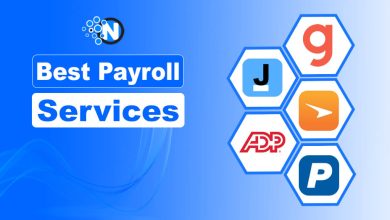10 Best Distribution Planning Software: Then and Now

Remember 2016? Distribution planning software back then was basically logistics software with a fancy name. Fast-forward to 2025, and we’re looking at AI-powered platforms that handle everything from demand forecasting to field sales management.
If you’re running a distribution business or managing a CPG brand, choosing the right software isn’t just about efficiency anymore – it’s about staying competitive. McKinsey’s 2024 Supply Chain report found that companies using advanced planning tools cut logistics costs by up to 15% while boosting service levels by 30%. Those aren’t small numbers.
In this blog post, I have listed the top 10 distribution planning solutions, including key features and limitations.
What Is Distribution Planning Software?
Distribution Planning Software is a digital solution that helps businesses optimize how products move from warehouses to customers. It ensures the right goods reach the right place at the right time, with minimal cost and maximum efficiency.
The software is designed to streamline and automate the complex logistics involved in product distribution.
10 Best Distribution Planning Software

1. SimplyDepo – Built for Modern B2B Distribution

Rating: ⭐ 4.8 on G2
Founded: 2020
Best For: Wholesale distributors, CPG brands, field sales teams
SimplyDepo is a purpose-built platform that connects sales, merchandising, and fulfillment in one intuitive dashboard. It’s fast to deploy, mobile-friendly, and designed to boost productivity from day one.
What it does well:
- Order management that improves productivity by 30–50%
- Route and territory planning with zero friction
- Mobile ordering for reps in the field
- Seamless integrations with QuickBooks, Stripe, and Zebra
- Real-time dashboards that anyone can understand
Why distributors love it:
- Onboarding in under 7 days
- No confusing upsells or hidden fees
- Transparent pricing from day one
📌 Impact: Users report a 22% increase in field sales productivity within 90 days.
2. Repsly – Retail Execution with CRM Focus

Rating: ⭐ 4.3 on G2
Founded: 2010
Best For: Retail brands, merchandising teams
Repsly specializes in retail execution—store audits, photo capture, and team tracking. It’s strong in CRM and field visibility but lacks depth in inventory and distribution planning.
What it does well:
- GPS tracking and visit verification
- Store-level photo and audit capture
- Team performance analytics
Limitations:
- No inventory forecasting
- Limited B2B eCommerce features
3. Pepperi – Customizable B2B Sales Platform

Rating: ⭐ 4.4 on G2
Founded: 2012
Best For: Enterprises needing tailored workflows
Pepperi offers deep customization and ERP sync, making it ideal for complex B2B sales environments. However, setup takes time and AI features are limited.
What it does well:
- Custom catalogs and pricing rules
- Offline ordering and ERP integration
- Flexible workflows for reps and managers
Limitations:
- Setup averages 3+ weeks
- Steep learning curve
- No predictive forecasting
4. GoSpotCheck – Field Data Collection Powerhouse

Rating: ⭐ 4.7 on G2
Founded: 2011
Best For: Retail execution, merchandising analytics
GoSpotCheck excels at capturing field data—photos, surveys, and compliance checks. It’s not a full distribution tool, but it’s great for retail visibility.
What it does well:
- Real-time photo and task capture
- Store audit workflows
- Custom survey creation
Limitations:
- No order management
- No route optimization
5. B2B Wave – eCommerce Portal for B2B Sellers

Rating: ⭐ 4.8 on G2
Founded: 2013
Best For: Wholesalers launching online catalogs
B2B Wave is a clean, flexible eCommerce platform with strong catalog and portal features. It’s great for selling online but lacks forecasting and logistics tools.
What it does well:
- Custom product catalogs
- Branded order portals
- Multi-language and multi-currency support
Limitations:
- No route planning
- No demand forecasting
6. Skynamo – Mobile CRM for Field Reps

Rating: ⭐ 4.5 on G2
Founded: 2012
Best For: Sales teams in remote or offline environments
Skynamo is built for reps who need offline access and GPS tracking. It’s fast and mobile-first, but lacks warehouse and forecasting features.
What it does well:
- Offline order capture
- GPS tracking and visit logging
- Mobile CRM features
Limitations:
- No predictive planning
- Limited warehouse integration
7. Zoey – B2B eCommerce Builder

Rating: ⭐ 4.5 on G2
Founded: 2016
Best For: eCommerce-focused B2B teams
Zoey started as a B2B storefront builder and now includes sales enablement tools. It’s great for digital catalogs and customer portals, but not for full distribution.
What it does well:
- Drag-and-drop storefront builder
- Customer-specific pricing and catalogs
- Mobile-friendly order capture
Limitations:
- No route optimization
- No inventory forecasting
8. Spotio – Route Planning and Field Analytics

Rating: ⭐ 4.5 on G2
Founded: 2014
Best For: Field sales teams
Spotio focuses on route optimization and rep performance tracking. It’s strong in mapping and analytics but lacks order management and supplier automation.
What it does well:
- Route planning and territory mapping
- Field rep performance dashboards
- CRM integrations
Limitations:
- No order workflows
- No backend logistics tools
9. Orders in Seconds – Fast Order Capture

Rating: ⭐ 4.9 on Google
Founded: 2004
Best For: Small teams needing quick order entry
Orders in Seconds is a lightweight tool for capturing orders in the field. It’s easy to use but lacks analytics, forecasting, and integrations for scaling.
What it does well:
- Mobile order entry
- Barcode scanning
- Basic reporting
Limitations:
- No predictive analytics
- Limited integrations
10. ForceManager – CRM with Mobile Intelligence

Rating: ⭐ 4.7 on G2
Founded: 2011
Best For: Sales teams needing mobile-first CRM
ForceManager is a mobile CRM with strong reporting and team visibility. It’s great for managing sales pipelines but lacks distribution-specific features.
What it does well:
- Mobile CRM and activity tracking
- AI-powered sales coaching
- Pipeline and performance dashboards
Limitations:
- No order management
- No logistics or warehouse tools
Quick Distribution Planning Software Comparison (2025)
| Tool | AI Forecasting | Real-Time Order Sync | Mobile Field Sales | QuickBooks Integration | Onboarding Speed | G2 Rating |
|---|---|---|---|---|---|---|
| SimplyDepo | ✅ | ✅ | ✅ | ✅ | <7 days | ⭐ 4.8 |
| Repsly | ❌ | ✅ | ✅ | ❌ | 2 weeks | ⭐ 4.3 |
| Pepperi | ❌ | ✅ | ✅ | ✅ | 3+ weeks | ⭐ 4.4 |
| GoSpotCheck | ❌ | ❌ | ✅ | ❌ | 1 week | ⭐ 4.7 |
| B2B Wave | ❌ | ✅ | ✅ | ❌ | 2 weeks | ⭐ 4.8 |
| Skynamo | ❌ | ✅ | ✅ | ❌ | 1 week | ⭐ 4.5 |
| Zoey | ❌ | ✅ | ✅ | ❌ | 2 weeks | ⭐ 4.5 |
| Spotio | ❌ | ❌ | ✅ | ❌ | 1 week | ⭐ 4.5 |
| Orders in Seconds | ❌ | ✅ | ✅ | ❌ | <1 week | ⭐ 4.9 (Google) |
| ForceManager | ❌ | ❌ | ✅ | ❌ | 1 week | ⭐ 4.7 |
What’s Changed Since 2016?
Back in 2016, distribution software meant logistics optimization. Separate systems for sales, separate systems for warehouses, separate systems for forecasting.
By 2025, the winners have figured out that everything needs to talk to each other. AI forecasting, cloud collaboration, and mobile sales all need to work together seamlessly. That’s not a trend; that’s the new baseline.
FAQs
It helps you manage inventory, forecast demand, and optimize delivery routes so products get where they need to be efficiently. Think of it as the brain behind your distribution operations.
Night and day. Modern platforms have AI that actually predicts demand, cloud tools for real-time collaboration, and mobile apps that turn field reps into productivity machines. The old stuff just helped you plan routes.
It’s the only platform that combines AI forecasting, order management, mobile field sales, and QuickBooks integration in a package that doesn’t require a PhD to use.
Wholesale distributors, CPG brands, and Direct Store Delivery (DSD) operations see the biggest returns. Basically, if you’re moving products from point A to point B at scale, you need this.
Absolutely. It scales from 5 users to 500+ without getting complicated. You only pay for what you need.




